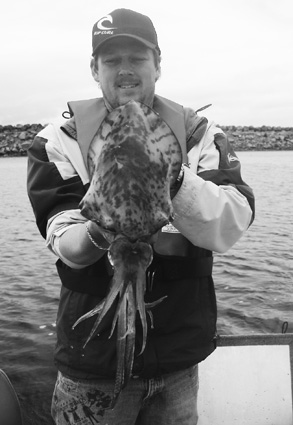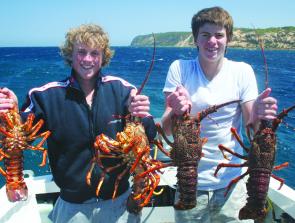Boat anglers will have a ball fishing for big flathead anywhere over the sand in 40-45m. If the last month is anything to go by, the only thing that stops anglers from landing a feed will be the huge schools of ferocious barracouta.
Large schools of ‘couta will take a liking to anything that moves in the water and sinkers and swivels don’t stand a chance when the fish are thick. Wire traces help but eventually they will bite at the swivel where your main line is joined and you rig will be gone forever. Not so bad if it only happens once or twice in a trip but this has been happening ten times a day. Remember to take plenty of spare tackle as I found myself cutting a session on the water short recently as I had no sinkers left in the boat.
King George whiting have been taken around the inshore reefs on pipis fished on a running sinker rig. Late in the afternoon is a good time to target the whiting and they have been responding well to berley made from pellets and crushed pilchards soaked in tuna oil. Try out from the waterfall or around the back of Marengo but remember to check out where the marine sanctuaries boundaries start and finish before heading out.
Blue and mako sharks have been taken from 70m of water straight out from Apollo Bay. Use berley to bring them around and a heavy wire trace so they don’t bite through it. Drifting is the preferred method of fishing but a sea anchor may need to be use to help slow down your drift rate. Snapper and gummy shark have also been taken from Cape Otway in 40m with fresh squid baits fished around the slack water periods bringing the best results.
The harbour at Apollo Bay is fishing very well for calamari squid from the pier or boat when using a prawn style squid jig. The smaller jigs in sizes 1.5 and 2 seem to work better then the larger jigs, as the squid become very flighty after constant fishing pressure. Early morning is the prime time to target the calamari.
Local divers have been taking advantage of the flat conditions and diving up a feed of crayfish is a good way to top off a day on the water. Crays can be found just about anywhere along the coast where heavy reef is located and they don’t need deep water to survive. Most of the bigger crays are caught from 1-2m of water right against the shore!
Reads: 3061
The Apollo Bay harbour has been producing plenty of quality calamari recently.

Jarron and Travis Cole show off their diving skills with a haul of respectable crayfish.




